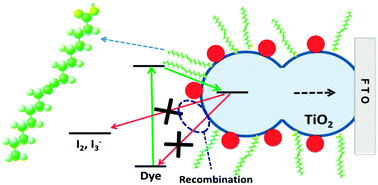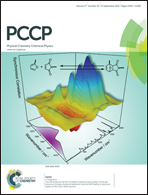Enhanced performance of dye-sensitized solar cells with dual-function coadsorbent: reducing the surface concentration of dye–iodine complexes concomitant with attenuated charge recombination
Abstract
In this paper, we have investigated the effects of oleic acid as a dual-function coadsorbent on recombination and iodine binding in dye-sensitized solar cells. Oleic acid as a dual-function coadsorbent effectively shields the back electron transfer from TiO2 to I3− ions and also reduces the surface concentration of dye–I2 complexes via iodine binding to the unsaturated double bond on oleic acid. It was found that interaction between iodine and the double bond of oleic acid keeps the iodine molecules away from the surface and reduces the recombination rate between injected electrons in a semiconductor and iodine molecules and also increases open-circuit voltage. Furthermore, the interaction between iodine molecules and unexcited dyes affects the UV-Vis spectrum of them and prevents an unfavorable blue shift. Overall, the results point to an improved performance for DSC operation and development.


 Please wait while we load your content...
Please wait while we load your content...